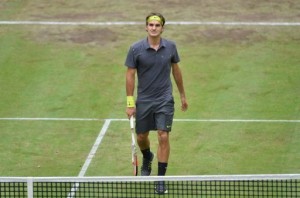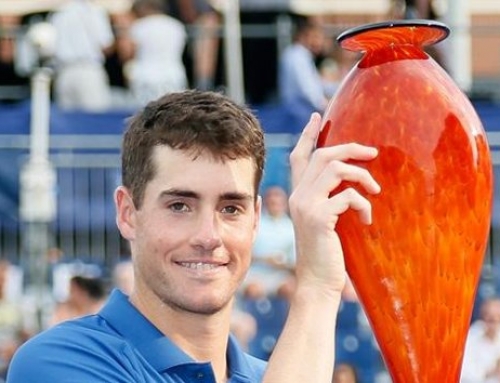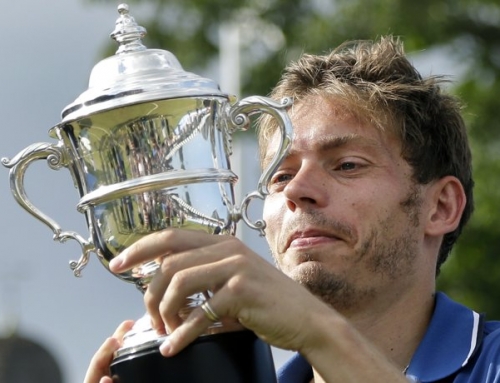 Few people, outside the US, realize just how long the clay season is. The clay season begins just after the Australian Open with a swing through South and Central America. There is a small break as the two US Master 1000 hard court events are played in Indian Wells and Miami in consecutive weeks. Then, back to clay from then to the end of the French Open. Then, a break to lead up to Wimbledon, and then a few small clay events after Wimbledon. That means, there is, on and off, about 6 months of clay events.
Few people, outside the US, realize just how long the clay season is. The clay season begins just after the Australian Open with a swing through South and Central America. There is a small break as the two US Master 1000 hard court events are played in Indian Wells and Miami in consecutive weeks. Then, back to clay from then to the end of the French Open. Then, a break to lead up to Wimbledon, and then a few small clay events after Wimbledon. That means, there is, on and off, about 6 months of clay events.
Grass, which used to be pre-eminent among all surfaces, has been reduce to a one-month period, the two weeks after Wimbledon, and Wimbledon. Oh, yes, there is the small event in Newport. Had grass been the more dominant surface, allowed to have a reasonable season like all the other surfaces, say, 5-6 weeks, maybe players like Roger Federer would be called king of grass. Or perhaps that title would be given to Tommy Haas.
Tommy Haas never seems to play more than about a month a year. He’s long been the poster child of injuries in men’s professional tennis. Maybe not as bad as Brian Baker, whose career was really cut short by injuries, but who may, with surgery, have fixed what ails him. Haas, much like Ferrero, a contemporary, has this weird ability to take a lot of time off, then play well for a few weeks before he gets injured once again, not to be heard of the rest of the year.
Back in 2009, Haas had one of his big streaks on grass. Federer, fresh off his French Open win, decided to skip Halle, much to the consternation of the organizers. Even so, they had Novak Djokovic who did his part to reach the finals, but lost to Tommy Haas. Haas would continue his solid grass play and reach the semis of Wimbledon, and, in the process, beat Djokovic again in the quarterfinals before losing to Federer in the semis.
Haas has had good wins: Tomic (who retired), Granollers, Berdych, and Kohlschreiber (the defending champ).
Federer almost never loses to players of his age or older. His most recently losses to players around his age are Davydenko, back in 2009, Melzer. But pretty much everyone else no longer beats Fed including Hewitt (though he beat him in Halle one year), Ferrero, Nalbandian, and yes, even Tommy Haas, who, at 34, is almost a half generation ahead of Federer.
Federer played someone close to his own age who also goes through these weird cycles of playing well and disappearing for vast parts of the tennis calendar. He played Mikhail Youzhny. The final score will say 61 64, but the second set wasn’t that close. Federer had chances to serve out a 62 double-break win. Even as Youzhny broke back, Fed had a chance to break again with 3 match points, but had to wait until his own serve to finally seal the deal.
Federer, unlike his rivals, seems to want to win grass events. Consider Murray who lamely went out to Mahut at Queen’s. Despite being trained in France, grass is perhaps Mahut’s best surface, with a junior Wimbledon title to his credit. Nadal pretty much tanked against Kohlschreiber, failing to run for balls he normally gets to, pushing passes wide that he normally makes. And Djokovic? He isn’t even playing until Wimbledon, which is pretty much what he did last year. People wondered if Djokovic could break through at Wimbledon, and he showed, at least then, that he could.
Meanwhile, across the pond at Queen’s Club (called the AEGON Championships), there are several players that haven’t played well in a while trying to make a mini-comeback of their own. In one half, there’s Marin Cilic against Sam Querrey. Querrey was pretty much out last year due to injury and has spent all year this year trying to get a decent result. This is his best result in some time. Marin Cilic hasn’t played well since reaching the semis of the 2010 Australian Open against Andy Murray. At the time, he was seen as the new del Potro which is pretty funny given del Potro was pretty new himself. Cilic beat him in 3 sets in today’s semi.
In the other semi, veteran David Nalbandian, who has actually reached a Wimbledon final, took on upstart Grigor Dmitrov, who is still waiting for a good win over a top player (today’s win would not have been it). Nalbandian won 64 64, by breaking Dimitrov in a game where the Bulgarian was up 40-15.
Hard to say who is favored in the finals. Despite neither having played well lately, Cilic is seeded higher than Nalbandian, so continues to win enough to keep his rank up.



![[Stockholm] Dimitrov wins first ATP title with 3-set victory over Ferrer](https://www.essentialtennis.com/wp-content/uploads/2013/10/20131021grigor-500x383.jpg)
![[Metz/St. Petersburg] Simon and Gulbis are champions!](https://www.essentialtennis.com/wp-content/uploads/2013/09/20130922gulbis-500x383.jpg)

